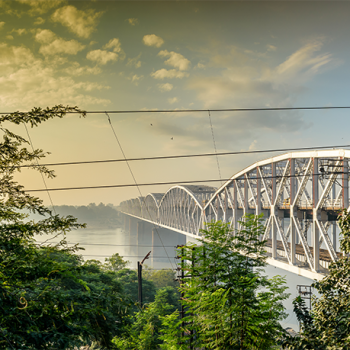India’s New Direction in Infrastructure Investment: A Country Break
For those commentators who might have thought they detected a slackening off over recent months in the appetite of Prime Minister Modi’s Government to engage in still further rounds of major infrastructure spending, the Union Budget Statement was something of a wake up call. Anyone sensing a slackening was simply looking in the wrong place, because key infrastructure developments are now happening outside India’s crowded urban conurbations: they’re happening in the countryside.
Rural Infrastructure Investment is the next big thing…
The Union Budget allocated close to Rs 5.97 lakh crore in infrastructure investment for the 2018/19 Financial Year, which is an increase of 21% on the equivalent figure for the Financial Year ending April 2018. So much for a slowing down and a loss of appetite; and that’s not all by any means, because the Budget has also created an “environment for demand recovery” particularly aimed at rural India and which looks set to lead to still further improvements in capacity utilisation and greater private capital involvement in future projects.
The Budget increased Rural Infrastructure spending commitments by no less than 30% percent to Rs 1.43 lakh crore, all of which will go towards increasing rural income levels through providing additional employment and greater market demand through the operation of the multiplier effect in rural markets (bearing in mind of course that the marginal propensity to consume is so much higher in rural areas of India).
Just take a look at the underlying facts if you’re still in any doubt on that.
Nearly 65% of India’s burgeoning population of 125 crore people live in the countryside, so an increase in spending across the board of 30% through ongoing connectivity projects (within the aegis of the Pradhan Mantri Gram Sadak Yojana Programme) is bound to give a major boost to growth. In particular, through new highways that will not only create a welter of additional construction jobs but also by connecting internal agricultural markets; and then there are sanitation projects, projects to conserve and distribute precious ground water and new electricity supply infrastructure, all of which will have positive economic spin offs.
And the Budget also envisages the construction of 51 lakh rural houses this financial year and another 51 lakh next year, meeting a pressing and ever increasing demand for more affordable housing across the subcontinent.
But it’s not all about the countryside by any mean.
57,000 kilometers of new roads have also been slated for construction at a total cost of Rs 19,000 crore; and to put that in perspective, the United Kingdom motorway network is 3,400 kilometers in length (less than a tenth of the new roads now to be built in India). There will also be 600 new major railway stations and a planned fivefold increase in airport capacity with the intention that it should meet the rapid increase in tourist and business travelers visiting India each year: the new capacity will be an eye watering one billion trips a year.
Economic miracles are seldom miraculous or sudden; they are ground out every day in the slow process of infrastructure expansion, but in modern India that process now has real traction and it has started to change the very fundamentals of the subcontinents economy. No wonder then that Red Ribbon still places Indian Projects at the heart of its investment strategies, just as it has done ever since the company was founded more than a decade ago.
[social_buttons full_width_icons="true" facebook="true" twitter="true" google_plus="true" linkedin="true" pinterest="true"][nectar_btn size="large" button_style="regular" button_color_2="Accent-Color" color_override="#7b1627" icon_family="none" url="https://redribbon.co/investment-products/" text="Invest in India with Red Ribbon Asset Management" css_animation="none" margin_top="10" margin_right="20" margin_bottom="10" margin_left="20"]








Leave a Reply